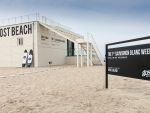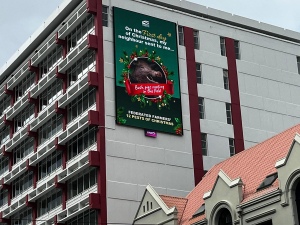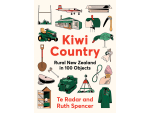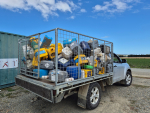New Zealand's red meat sector can look ahead to increasing opportunity in the Korean market now that the bilateral free trade agreement (FTA) has come into force.
So says NZ’s trade commissioner in Seoul, Ryan Freer.
“The price competitiveness with other countries’ beef and lamb products will erode no further as tariffs reduce to zero over time,” he told Rural News.
“Meanwhile, NZ product is well positioned to capture Korean consumers’ growing consciousness of the health benefits of lean beef and their new interest in lamb.
“But we will still need to put effort into capturing these opportunities ahead of our international competitors and a vocal local industry, who will be trying to protect their share of the market.”
Freer says Koreans are used to grain-fed red meat, and consumers associate marbled (fatty) beef with premium quality.
“This influences the type of cuts and the way that meat is used in traditional Korean dishes,” he says.
“The perception favours beef produced in Korea, the US and parts of Australia, where cattle are raised on feed.
“So NZ’s grass-fed, leaner red meat has typically been aimed at high-end western restaurants and the wider food service industry, with very little sold direct to Korean consumers.”
But this leaner branding resonates with Korean consumers who are conscious of their general health, wellbeing and image.
“Eating leaner meat, and beef in particular, has been linked to healthy body shapes, strengthened immunity, improved iron intake and warding off heart problems.
“It also plays to Korean consumers’ strong concerns about (perceived) food safety. This is especially relevant for beef, with mass public protests that erupted during the bovine spongiform encephalopathy (BSE)-related issue with US imports about ten years ago and regular outbreaks of foot-and-mouth disease in local livestock keeping animal disease in the public consciousness.
“Since the BSE issue it has been mandatory in Korea for restaurants over a certain size to identify on their menus the country of origin of the beef they serve; so NZ’s animal disease-free status and reputation as a clean and safe source of beef is beneficial in these circumstances.
“Our traceability system is a further source of comfort.”
Beef is by far the most popular red meat among Korean consumers.
“Following the detection of BSE in Canada and the US, overall beef consumption dropped sharply in Korea in 2004 as imports from those countries were banned and consumers became wary of food safety issues,” Freer says.
“By 2010, however, per capita beef consumption had risen above the pre-BSE levels again. Canadian and American beef is back in the market, however market share has shifted to Australian product.
“Overall beef consumption now stands at about 550,000 tonnes – the equivalent of 10.9kg per capita (NZ = 48/kg) and is forecast to expand 1-2% per annum to 2020.”
A range of beef cuts are used in various Korean dishes -- barbecues, stews and soups -- and in a growing number of western restaurants and fast food chains, Freer says.
“The growth in the number of single-person households and double-income families in recent years has also led to higher demand for convenient, ready-to-eat meals and lunchboxes.
“As a result, Korean food companies are looking to develop easy-to-cook products which contain meat extracts and products easy to consume and consistent in portion size -- attractive to retail and food service customers.”
Korean consumers are also embracing new flavours and this could benefit NZ exporters, Freer says.
“Sheepmeat, for instance, has not traditionally been a major part of the Korean diet; many consumers have a negative perception of sheepmeat’s smell and taste, after being exposed to only cheaper cuts of mutton in the past,” he says.
“But the younger generation is now flocking to Chinese-influenced lamb barbecue and skewer restaurants in Seoul in particular.”
Korea’s “next big culinary craze” – as some media are describing it -- has caused sheepmeat sales in Korea to expand 47% in 2014 and another 24% in 2015.
“The burgeoning Korean-Chinese population in Korea is being credited with starting the trend.
“Chinese-Korean Lee Hang-yung told local media he opened the first Chinese lamb restaurant outside Konkuk University and now the street is end-to-end with restaurants with similar menus built on lamb shoulders, rack and flaps.
“In the past, our customers were all Chinese, but now they’re 90% Koreans,” says Lee. “In China, lamb skewers are prepared with the fat and the meat together, but here it’s more like Korean barbecue (galbi) with seasoning of red pepper, cumin, mustard seed and other spices.”











